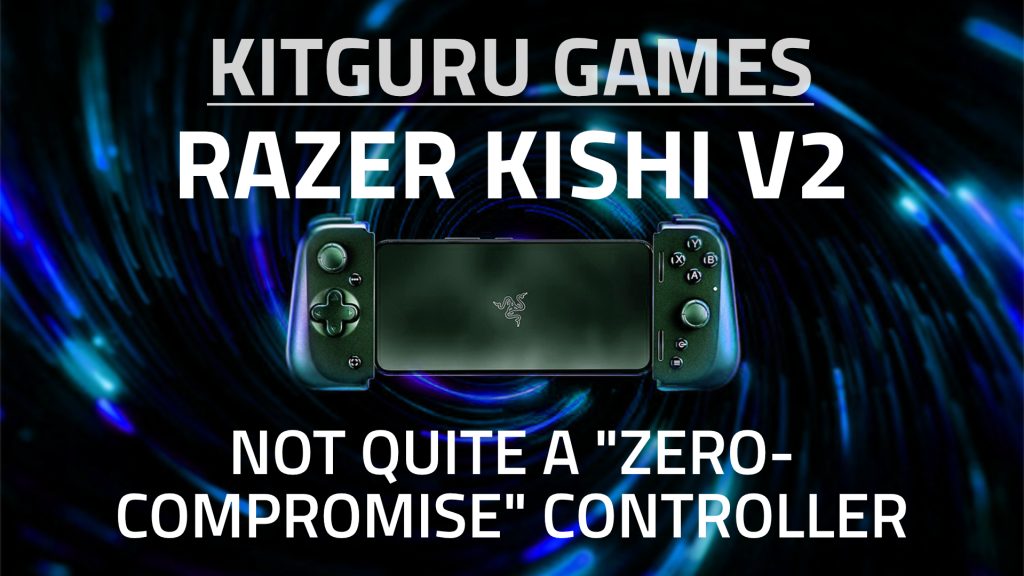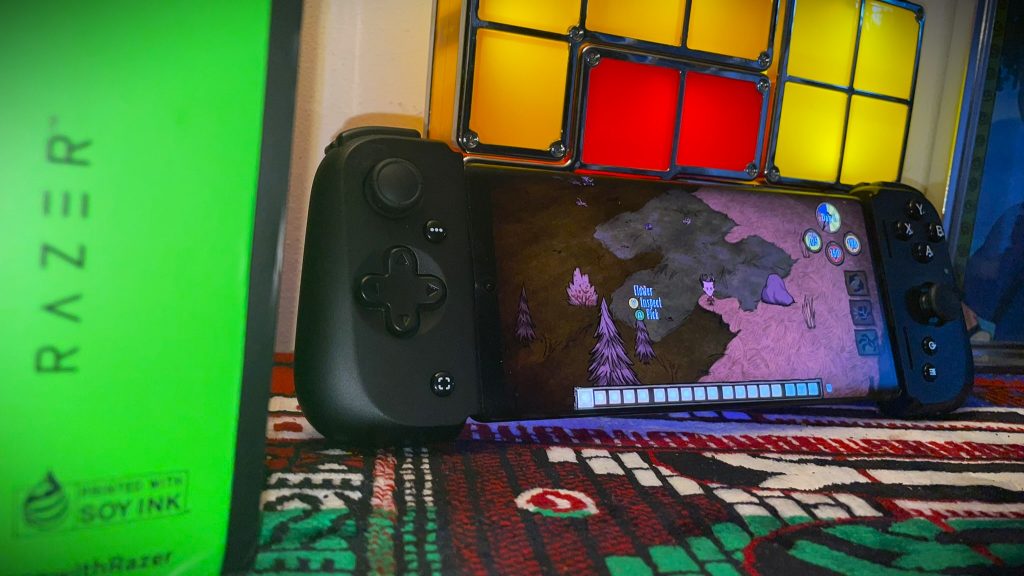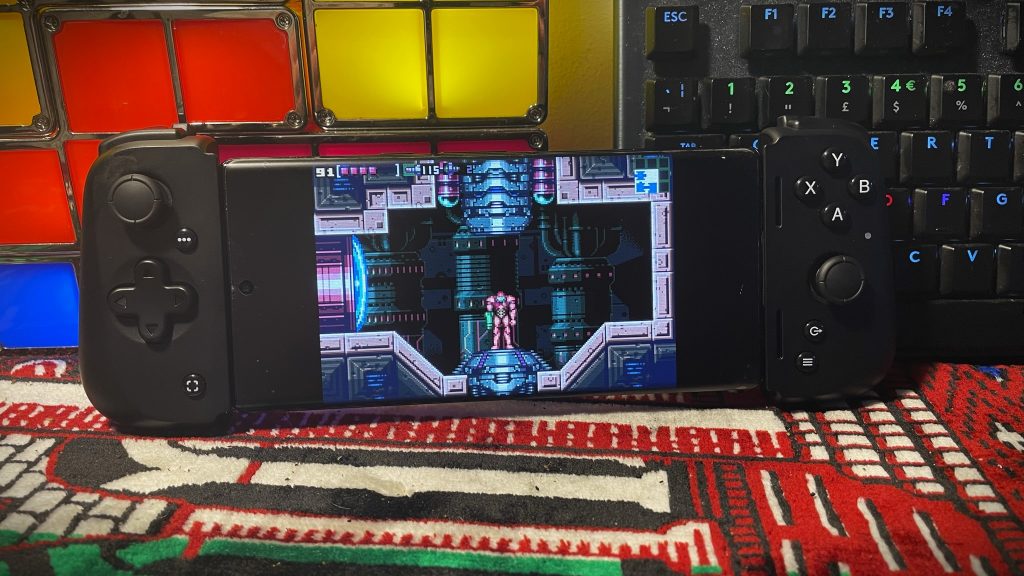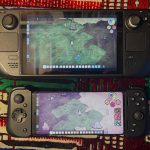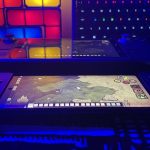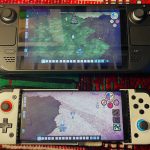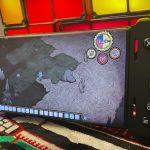The term ‘mobile gaming' is a loaded one, conjuring images of freemium titles, microtransactions and predatory practices. While a large majority of the games available on the Google Play Store or Apple App Store fall into such categories, the power of these slim little smartphone slabs are in many ways unrivalled and can be used to play hundreds, if not thousands, of console games.
Playing video games using touch inputs is unfortunately a wholly subpar experience and serves as the primary factor holding mobile gaming back. Accessory manufacturers have tried to circumvent this limitation for years, though unfortunately their capabilities were unable to match their ambitions. Razer recently released the Kishi V2 USB-C mobile gaming controller, and after getting my hands on it I can safely say that, objectively speaking, the Razer Kishi V2 is the best mobile gaming controller currently available – though it’s far from perfect.
The Razer Difference
First things first: What is the Razer Kishi V2? It is a £99.99 USB-C universal mobile gaming controller which according to the manufacturer “brings a console-class gameplay experience to your smartphone”. Indeed, the controller comes with all the buttons, joysticks and triggers that one might need and then throws in a couple extra on top for added functionality.
Most notably, the Kishi V2 comes with two additional shoulder buttons making for a total of three on each side. Sandwiched next to the R1/L1 shoulder buttons and the analogue triggers are small but highly useful M1/M2 buttons, which can be programmed however you wish. Razer quite smartly made the M1/M2 buttons small enough to not get in the way of the other shoulder buttons, while increasing their depth so that they are distinctly felt when gripping the controller. The Kishi V2 also features two additional non-standard buttons – one which will start recording your screen, while the other takes you straight to the Razer Nexus app.
Speaking of the app, Razer’s Nexus companion is what allows you to customise all of the Kishi’s controls while simultaneously serving as a game launcher. The Nexus app collates all of your currently installed games while also recommending other controller-compatible titles available for purchase on the Google Play Store. For an individual new to gaming on mobile, this game discovery functionality could prove quite useful thanks to its focus on console-like titles as well as its minimalist aesthetic. As someone intimately familiar with the Play Store and its games however, the Nexus launcher feels in many ways like a glorified billboard. That being said, it is still a must-have for its button customisation functions alone – and the remainder of its ‘features’ can be easily and safely ignored if you so desire.
As mentioned, this isn’t my first rodeo into the world of gaming on mobile. I own multiple different Android controllers, from the Gamesir x2 to the Hyperkin Smartboy which has helped me to identity and appreciate the subtle yet significant improvements made by the Kishi V2 – though also its drawbacks.
The Good
As mentioned, there are very few USB-C mobile controllers, and even fewer with analogue triggers. Luckily, the Razer Kishi V2 is one of the few with such functionality. Admittedly, not too many games actually take advantage of analogue triggers, with the main genre to utilise it being racing games. Still, regardless of whether it is used all the time or not, the triggers being analogue in nature helps to create a more console-like sensation in the hands, thanks to its plentiful button travel while also giving you a ridge to rest your fingers on when not using them.
Speaking of buttons, triggers aside, the Razer Kishi V2 makes use of “cutting edge microswitch buttons” and a mechanical D-pad for tactile and immediate responsiveness. While certainly smaller than a dedicated console controller, the buttons are all comfortably placed and the D-pad is both large enough and accurate enough for all your 2D gaming needs. My Gamesir X2 and Hyperkin Smartboy both exhibit occasional mis-clicks with their D-pads, especially when rolling from one input to another. I did not encounter any such issues with the Kishi V2. The reliability of a controller is one of its most important aspects and the Kishi V2 passes with flying colours.
That being said, while the buttons are objectively good, I personally prefer the softer, mushier clicks of a rubber membrane button and D-pad. I must stress however that this is a personal preference and differs from person-to-person. That being said, a large number of console controllers both new and old use rubber membrane buttons, meaning that you are more likely to have experience with rubber membranes and so might need some time to get used to the clickiness and short travel of microswitch buttons. I understand why Razer would opt for such buttons seeing as how both the short travel and loud click make for an immediately recognisable sensation in the fingers – highly useful for multiplayer or competitive titles – but I simply prefer otherwise.
Though not uncommon for mobile controllers which connect to your phone via USB-C, the Kishi V2 features passthrough charging, allowing you to charge your phone through the controller’s USB-C slot. The Gamesir X2 also includes passthrough charging, though the Hyperkin Smartboy does not – so it’s not always a guarantee.
The final positive I’d like to comment on is the overall hand feel. While there isn’t one single aspect to the controller which puts its above others, the purposeful curvature of the device helps it to rest nicely within my hands, and the slim retractable yet stable bridge leaves plenty of space for your fingers to grip the controller. Whether using the triggers and sticks to drive a car in Forza, or making use of the D-pad and buttons for some old-school platforming, the Kishi V2 offered flexibility in way I was able to hold the system, allowing me to shift my grip to suit the game – though I must say 2D titles felt especially nice with it.
The Bad
Unfortunately, the analogue sticks are not to my liking. Though I cannot confirm whether they are the exact same sticks used for the Nintendo Switch, they certainly look and feel identical. I did not suffer any stick drift, and I cannot say whether they will develop such an issue in the future, but as with the Nintendo Switch, the Kishi’s analogue sticks feature very little Z-depth and the circumference of their rotation leaves very little space for accuracy. To be fair to Razer, it is quite tough to fit any decent analogue sticks in a controller that small and so most gaming handhelds released these days use Switch-like sticks.
Interestingly, the Gamesir X2 opted for its own solution, using analogue sticks which manage to take up a similar amount of space while feeling significantly better to use. Positioned diagonally like the Kishi V2, Gamesir X2’s analogue sticks are twice as tall while also featuring a thicker stem and greater rotational circumference. These three changes make for a much more accurate and console-like experience – though nothing can compare to the sticks of an actual console controller of course.
With all that said, if you do not mind the sticks on the Nintendo Switch, then you won’t find any issues with the Kishi’s. In fact, you might have a slightly better experience with the Kishi due to its more ergonomic design when compared to the flat slab that is the Nintendo Switch. Even so, it’s far from my favourite analogue experience (though in all transparency, I actively despise the Switch’s Joy-Cons).
The extendable back bridge is designed to fit almost any major USB-C smartphone. My 6.7 inch Google Pixel 6 Pro easily fits with plenty of room to spare. The Kishi also comes with two sets of replaceable adapters, meaning all but the most fringe of phones should easily fit. That being said, as the controller is comprised entirely of plastic, there is very little grip for the top of the phone especially, meaning that it can slide and pivot with very little force.
Your phone won’t fall out of the grip thanks to the pressure of the controller’s retractable bridge, however a thin layer of rubber on the inside would have easily eliminated this issue, making for a much more solid and secure feeling grip. As mentioned, the controller is nearly entirely plastic, which is fine, however the textured back of the Kishi V2 would have also benefited from being made of rubber instead – though this critique falls more in the line of personal preference.
The final flaw of note comes from the Kishi’s USB-C connector and its rigidity, though in order to explain, I must once again refer to its competitors. The Gamesir X2 offers a slightly elongated USB-C connector which is also capable of tilting up and down. This implementation offers two key advantages: It allows for greater case support and is more likely to stand the test of time. Razer has noted that the Kishi V2 is able to support SOME phone cases, and I can certainly see that being true.
Unfortunately, when trying to use the Kishi with the Pixel and its case, the added depth of the phone’s USB-C port is just slightly out of reach for the Kishi, meaning that for me, using the controller means removing the phone's case. The elongated USB-C connector on the Gamesir X2 meanwhile is just about long enough to allow me to use the controller with my case on, and its flexibility means that I can connect the phone at an angle and then anchor it into place without causing any strain to either the controller itself or the phone. I’m not saying that the Razer Kishi will ruin your phone’s USB-C port, but its rigidity means that it has the potential to cause more damage should any excessive pressure be put on the connector accidentally or not.
Conclusion
All of these nit-picks aside, the Razer Kishi is the best USB-C Android gaming controller I’ve used thanks to its small form factor, reliable build quality and comfortable hand feel. It may have a healthy number of small issues, but none of them (aside from maybe the Switch-like analogue sticks) really detract from the overall experience while gaming.
There are certainly enough drawbacks to give some people pause, however if you are looking for a USB-C smartphone controller (and there is more than enough software out there to justify it), the Razer Kishi V2 gets most of the fundamentals right – and the M1/M2 buttons alone are enough to warrant a heavy consideration, especially if you want to use your phone for emulation.
Now that I have the Razer Kishi V2, the Gamesir X2 will most likely be retired. I've owned a dozen or so handheld consoles over the course of my life, and yet my Pixel 6 Pro in combination with the Kishi V2 is undoubtedly one of the most comfortable – second perhaps only to the Steam Deck. Of course, the Steam Deck is pushing the limits of what a handheld is, and so it’s quite an unfair comparison. That being said, with Razer claiming the Kishi V2 to be a “zero compromise” peripheral, I feel it important to push back slightly on such a statement. The Kishi V2 is great, but as I explained, it is far from an uncompromised experience.
Even so, you’d be hard pressed to find a USB-C Android controller which offers a comfortable hold in a slim and light chassis while also including analogue triggers; extra reprogrammable buttons; and reliable build quality. The Razer Kishi V2 manages to do all these things and more, making it an attractive package, both physically and functionally.
Discuss on our Facebook page HERE.
KitGuru says: Are you interested in the Razer Kishi V2? Have you owned any USB-C Android controllers? What's a dealbreaker for you when it comes to controllers? Let us know your thoughts down below.
 KitGuru KitGuru.net – Tech News | Hardware News | Hardware Reviews | IOS | Mobile | Gaming | Graphics Cards
KitGuru KitGuru.net – Tech News | Hardware News | Hardware Reviews | IOS | Mobile | Gaming | Graphics Cards


